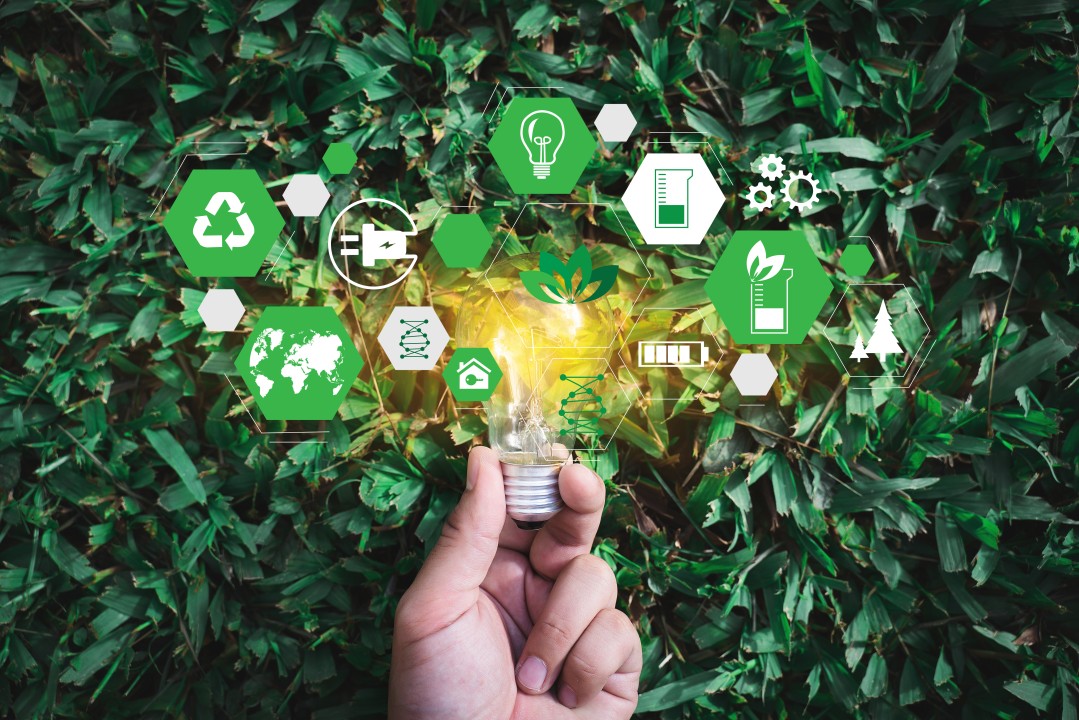AI-powered tools can also forecast energy demand and adjust operations accordingly, ensuring that energy use is both cost-effective and sustainable.
Sustainability has become a critical focus in today’s business landscape. As the world faces environmental challenges such as climate change, resource depletion, and pollution, businesses are under increasing pressure to adopt sustainable practices. However, achieving sustainability is no longer just about reducing carbon footprints or complying with regulations. It’s about leveraging technology to drive innovation, improve efficiency, and create value for both the environment and society.
In this blog post, we will explore how technology plays a pivotal role in advancing sustainability in business, examining its impact on energy efficiency, waste reduction, sustainable supply chains, and green innovation.
1. Energy Efficiency through Smart Technology
Energy consumption is one of the largest contributors to carbon emissions. As businesses seek to reduce their environmental impact, technology has emerged as a key enabler in optimizing energy use. Smart technology, including Internet of Things (IoT) devices, artificial intelligence (AI), and data analytics, is transforming how companies monitor and manage their energy consumption.
For example, smart sensors and energy management systems allow businesses to monitor energy use in real-time and make data-driven decisions to improve efficiency. By identifying patterns in energy consumption, companies can pinpoint areas where energy is being wasted and implement targeted solutions, such as adjusting heating and cooling systems, optimizing lighting, or upgrading equipment.
AI-powered tools can also forecast energy demand and adjust operations accordingly, ensuring that energy use is both cost-effective and sustainable. In industries such as manufacturing, automation powered by AI can reduce energy consumption by optimizing production schedules and processes.
2. Waste Reduction and Circular Economy
The concept of a circular economy, which focuses on reducing waste by reusing, recycling, and repurposing materials, is gaining traction in businesses worldwide. Technology plays a central role in this shift by enabling better waste management and promoting resource efficiency.
Technologies such as advanced recycling systems, AI-driven waste sorting, and 3D printing contribute to the reduction of waste. AI and machine learning algorithms can analyze waste data to predict which materials can be reused or recycled, improving the effectiveness of recycling programs. This not only reduces the amount of waste sent to landfills but also minimizes the need for virgin raw materials.
3D printing, also known as additive manufacturing, allows companies to produce products using only the exact amount of material needed, eliminating waste during the production process. Additionally, it enables the use of recycled materials in manufacturing, which reduces the demand for new resources.
Blockchain technology also plays a crucial role in waste reduction by improving transparency and traceability in supply chains. By providing a secure and transparent way to track products and materials, blockchain ensures that items are properly recycled or disposed of, reducing waste and promoting responsible consumption.
3. Sustainable Supply Chains
The global supply chain is one of the most significant contributors to environmental degradation, with the transportation of goods alone accounting for a substantial amount of greenhouse gas emissions. To make supply chains more sustainable, companies are turning to technology to enhance visibility, improve efficiency, and reduce emissions.
Blockchain is a prime example of how technology is transforming supply chains. By creating a transparent and immutable record of each step in the supply chain, businesses can ensure that products are sourced ethically and sustainably. Blockchain enables companies to trace the origin of materials, verify fair labor practices, and ensure compliance with environmental regulations.
In addition, AI and machine learning are being used to optimize supply chain operations. These technologies can analyze data to identify inefficiencies in transportation routes, reduce fuel consumption, and predict demand, allowing businesses to adjust production schedules and reduce overproduction. By improving efficiency across the supply chain, companies can reduce waste, lower emissions, and improve the sustainability of their operations.
Logistics companies are also exploring alternative fuel options, such as electric trucks and drones, to reduce their carbon footprint. These technologies, combined with data-driven insights, help businesses create more sustainable and efficient transportation systems.
4. Green Innovation and Product Development
Innovation plays a crucial role in achieving sustainability, and technology is at the forefront of driving new solutions. Businesses are leveraging technology to develop environmentally friendly products and services that meet consumer demand for sustainability.
For instance, renewable energy technologies, such as solar panels, wind turbines, and energy storage systems, have become more affordable and efficient due to advancements in technology. Companies in various industries are adopting these technologies to power their operations and reduce reliance on fossil fuels.
In the consumer goods sector, businesses are developing products with minimal environmental impact. From eco-friendly packaging to biodegradable materials, technology is enabling companies to create sustainable products that appeal to environmentally conscious consumers. Additionally, businesses are using technologies such as AI and machine learning to optimize product design, ensuring that materials are sourced sustainably and the production process is energy-efficient.
Technologies such as virtual reality (VR) and augmented reality (AR) are also being used to reduce the environmental impact of product development. By using VR and AR for design and prototyping, companies can reduce the need for physical prototypes, which helps minimize waste and energy consumption in the early stages of product development.
5. Environmental Monitoring and Reporting
To track and manage their sustainability efforts, businesses need accurate data on their environmental impact. Technology plays a key role in providing real-time environmental monitoring and reporting, which enables companies to make informed decisions and take action to mitigate negative impacts.
IoT sensors, for example, can be used to monitor air and water quality, energy consumption, and waste generation in real time. This data can be analyzed and used to identify areas for improvement and ensure compliance with environmental regulations.
Moreover, cloud computing and data analytics allow businesses to collect and store large volumes of environmental data, providing insights into trends and performance over time. With this information, companies can set measurable sustainability goals and track progress, helping them achieve long-term environmental objectives.
6. The Future of Sustainability in Business
As technology continues to advance, its role in promoting sustainability will only grow. Emerging technologies such as artificial intelligence, quantum computing, and biotechnology hold the potential to revolutionize industries and create new opportunities for sustainable business practices.
For example, quantum computing could enhance climate modeling and predict environmental changes with greater precision, enabling businesses to develop more effective strategies for reducing their environmental impact. Biotechnology also promises breakthroughs in areas such as bio-based materials and sustainable agriculture, helping businesses transition to more sustainable practices.
Ultimately, the future of sustainability in business lies in the ability to integrate technology seamlessly into every aspect of operations. By embracing technological innovations and adopting sustainable practices, businesses can not only reduce their environmental footprint but also create value for customers, shareholders, and society as a whole.
Conclusion
Technology is playing an increasingly important role in advancing sustainability in business. From optimizing energy use and reducing waste to creating sustainable supply chains and driving green innovation, businesses are leveraging technology to make their operations more environmentally responsible. As technology continues to evolve, it will undoubtedly unlock new opportunities for businesses to enhance their sustainability efforts, benefiting both the planet and their bottom line.
By embracing these technological advancements, businesses can contribute to a more sustainable future while staying competitive in an increasingly eco-conscious market. The key to success lies in adopting and integrating these technologies into the core of business strategies, ensuring that sustainability is not just a trend but a long-term commitment to environmental stewardship.




COMMENTS